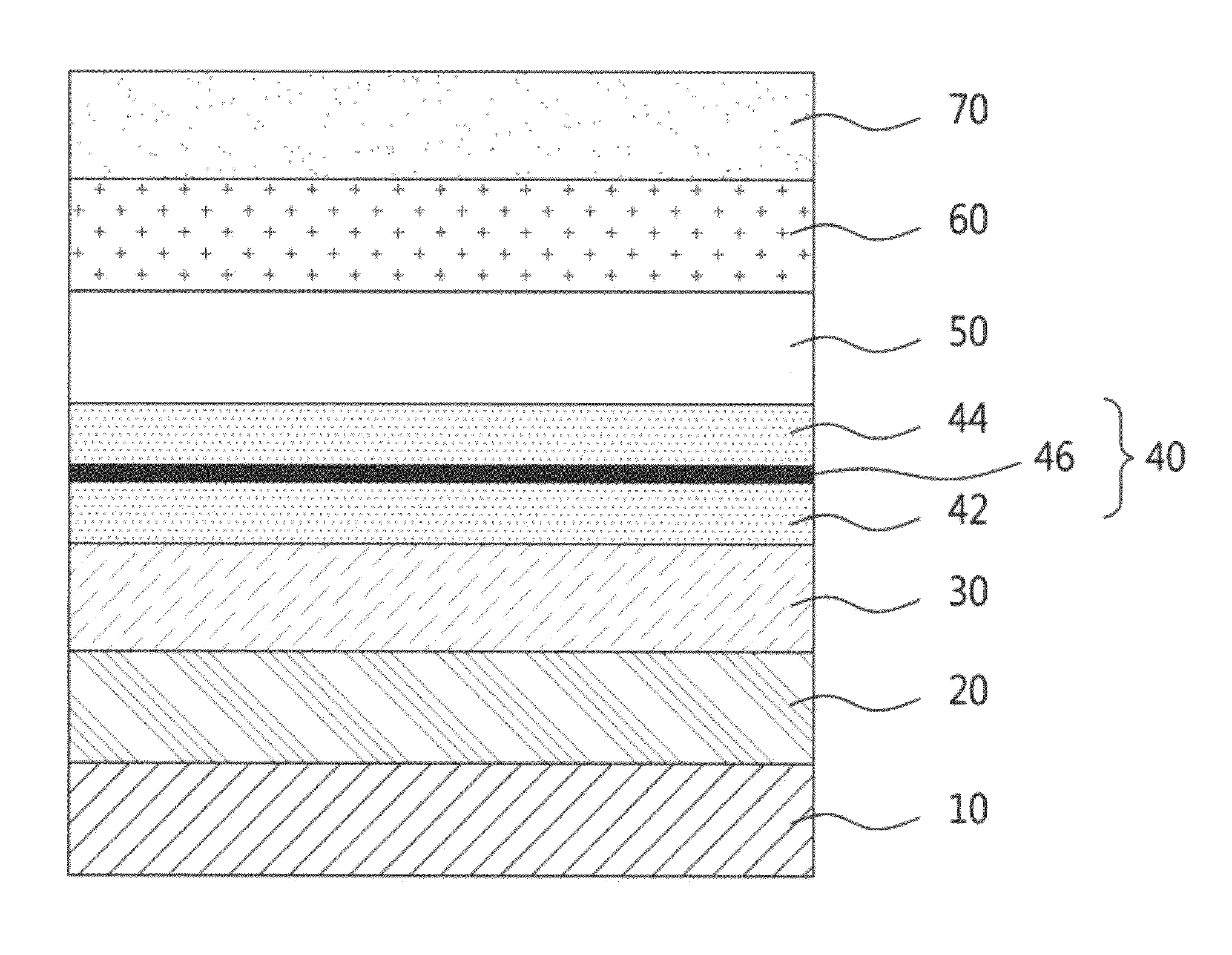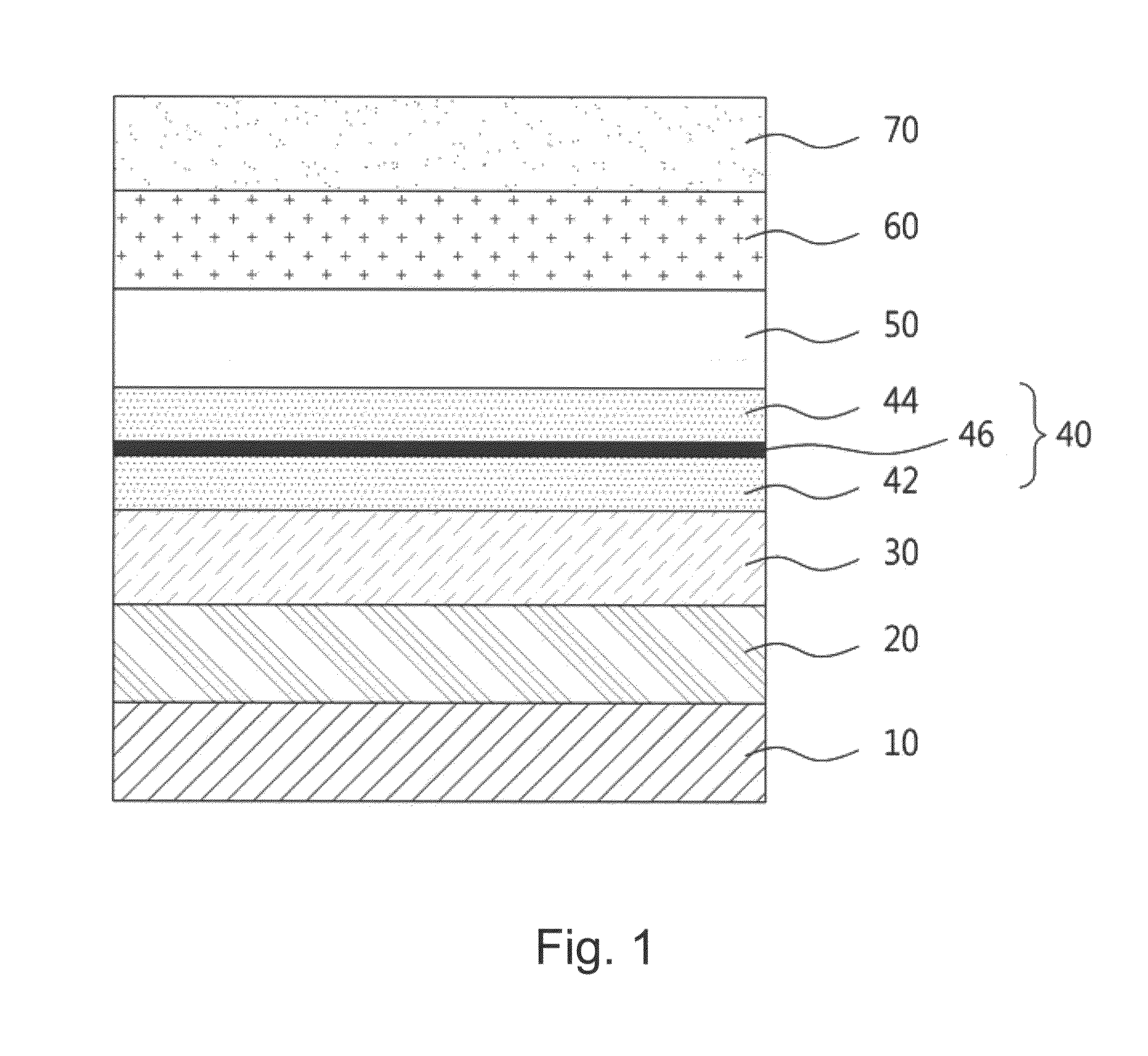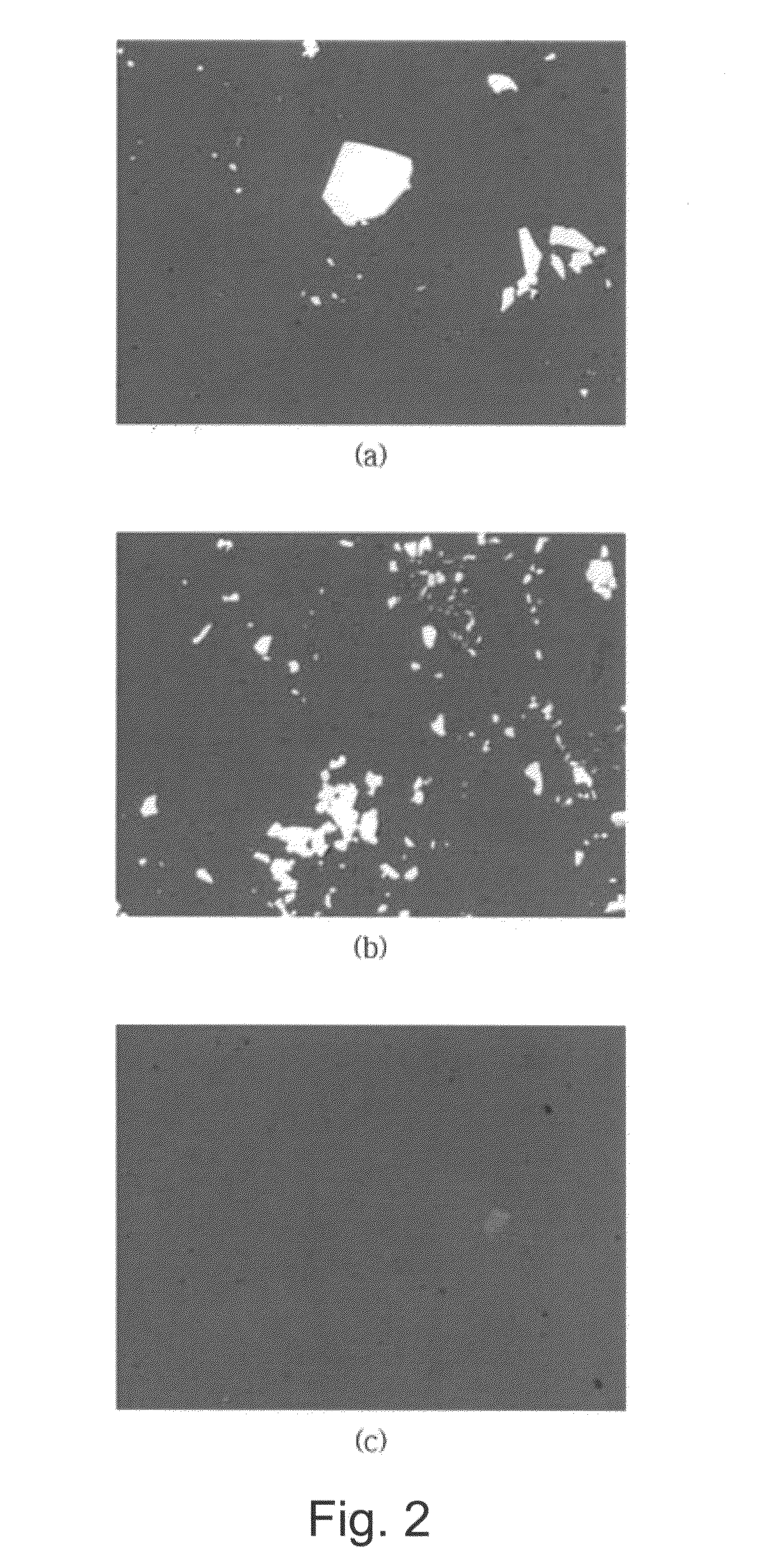Organic-inorganic hybrid light emitting device, method for manufacturing the same, and organic-inorganic hybrid solar cell
a technology of organic inorganic and solar cells, which is applied in the direction of solid-state devices, semiconductor devices, thermoelectric devices, etc., can solve the problems of limited application of organic electroluminescent displays, light-emitting devices, and agglomeration of fluorescent particles, so as to improve the power efficiency of organic light-emitting devices and improve the luminance efficiency of them. , the effect of brighter ligh
- Summary
- Abstract
- Description
- Claims
- Application Information
AI Technical Summary
Benefits of technology
Problems solved by technology
Method used
Image
Examples
Embodiment Construction
[0037]Hereinafter, preferred embodiments of the present invention will be described in detail with reference to the attached drawings.
[0038]FIG. 1 is a schematic sectional view showing the laminate structure of an organic-inorganic composite light-emitting device according to an embodiment of the present invention.
[0039]The organic-inorganic composite light-emitting device according to an embodiment of the present invention includes a luminescent layer 40 disposed between a first electrode 10 and a second electrode 70 facing each other.
[0040]The organic-inorganic composite light-emitting device further includes: a hole injection layer 20 being in contact with the first electrode 10 to receive holes from the first electrode 10; and a hole transport layer 30, one side of which is in contact with the hole injection layer 20 and the other side of which is in contact with the luminescent layer 40, to transport the holes charged in the hole injection layer 20 to the luminescent layer 40, ...
PUM
 Login to View More
Login to View More Abstract
Description
Claims
Application Information
 Login to View More
Login to View More - R&D
- Intellectual Property
- Life Sciences
- Materials
- Tech Scout
- Unparalleled Data Quality
- Higher Quality Content
- 60% Fewer Hallucinations
Browse by: Latest US Patents, China's latest patents, Technical Efficacy Thesaurus, Application Domain, Technology Topic, Popular Technical Reports.
© 2025 PatSnap. All rights reserved.Legal|Privacy policy|Modern Slavery Act Transparency Statement|Sitemap|About US| Contact US: help@patsnap.com



